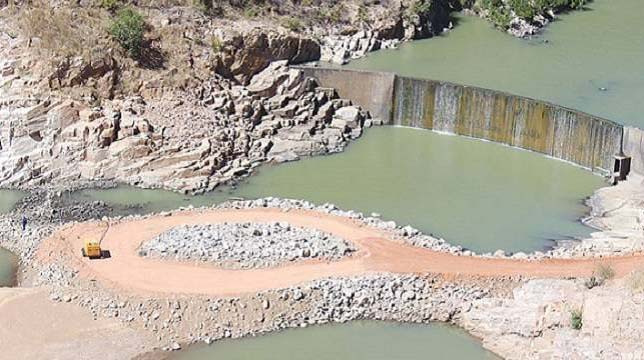
Zimbabwe: Dam Will Transform Silobela into Green Belt
The construction of the Gwayi-Shangani Dam in Silobela, Zimbabwe, is poised to revolutionize the district, transforming it into a vibrant green belt. The dam, with a storage capacity of 635 million cubic meters, is expected to irrigate over 25,000 hectares of land and provide water for domestic and industrial use.
Agriculture Boost
The dam will significantly boost agricultural production in Silobela, which is currently largely reliant on rain-fed farming. The irrigation scheme will allow farmers to cultivate a variety of crops throughout the year, including high-value crops such as sugarcane, cotton, and horticultural produce. This will not only increase crop yields but also create employment opportunities and improve livelihoods.
Enhanced Water Security
The Gwayi-Shangani Dam will also address the chronic water shortages faced by Silobela residents. The dam will provide a reliable water supply for both domestic and industrial use, ensuring that the district has access to clean and safe water. This will have a positive impact on health and sanitation, and reduce the time women and children spend collecting water.
Hydropower Generation
In addition to irrigation and water supply, the dam will also generate hydroelectricity. A 150-megawatt power station is planned to be built at the dam site, which will contribute to Zimbabwe’s energy supply and reduce reliance on imported electricity.
Environmental Benefits
The construction of the dam will also have significant environmental benefits. The dam will create a large reservoir that will attract wildlife and provide a habitat for various aquatic species. The reservoir will also help regulate the flow of the Gwayi River, reducing the risk of flooding downstream.
Investment and Development
The Gwayi-Shangani Dam project is expected to attract investment and development to Silobela. The improved water security and agricultural potential will make the district an attractive destination for businesses and investors. This will create new job opportunities and boost the local economy.
Conclusion
The Gwayi-Shangani Dam is a transformative project that will unlock the potential of Silobela. The dam will provide water for agriculture, domestic use, and hydropower generation, while also creating environmental benefits and attracting investment. The project is expected to transform Silobela into a green belt, improving livelihoods, enhancing water security, and promoting sustainable development.Vungu Dam Project Progressing Well in Silobela
Vungu Dam Project Progressing Well in Silobela
Construction work on the Vungu Dam in Silobela is on schedule, with the contractor confident of completing the project by the end of the year. The national project, launched in January 2022, will bring life and agricultural development to the arid Silobela district. Project engineer Grison Muwidzi stated that the construction works are progressing according to plan. He expressed excitement over the government’s support, adding that the project is currently 15% complete. The completion of the dam is expected by the end of the year if funds are provided as per the agreement. Muwidzi noted the team’s dedication to completing the project swiftly. The local community eagerly anticipates the project’s completion, recognizing its potential to transform their livelihood. They plan to engage in horticultural projects, transforming Silobela into a green belt. The government emphasized the importance of stakeholder collaboration to ensure the project’s timely completion. Permanent Secretary Fananai Madambi highlighted the project’s significance in empowering marginalized communities. The project will provide irrigation for over 2,500 families and includes plans for a hydroelectric power station and a water refinery plant to serve the Silobela community.Zimbabwe: Dam will transform Silobela into green belt Silobela, Zimbabwe – A new dam being constructed in Silobela, Zimbabwe, is expected to transform the area into a green belt, boosting agricultural production and improving the livelihoods of local communities. The dam, which is being built on the Mwenje River, will have a capacity of 120 million cubic meters and will provide water for irrigation, domestic use, and livestock watering. It is expected to be completed in 2024. The dam is part of the government’s efforts to promote irrigation development and ensure food security in the country. Zimbabwe has been experiencing recurrent droughts in recent years, which have had a devastating impact on agricultural production. The dam is also expected to boost tourism in the area. The lake created by the dam will provide a scenic spot for fishing, boating, and other recreational activities. The construction of the dam has created employment opportunities for local people. Over 1,000 people are currently working on the project. The dam is expected to have a significant impact on the lives of people in Silobela. It will provide water for irrigation, which will allow farmers to grow crops all year round. This will increase agricultural production and improve food security in the area. The dam will also provide water for domestic use and livestock watering. This will improve the health and well-being of local communities. The dam is a major investment in the future of Silobela. It is expected to transform the area into a green belt and improve the lives of local people.